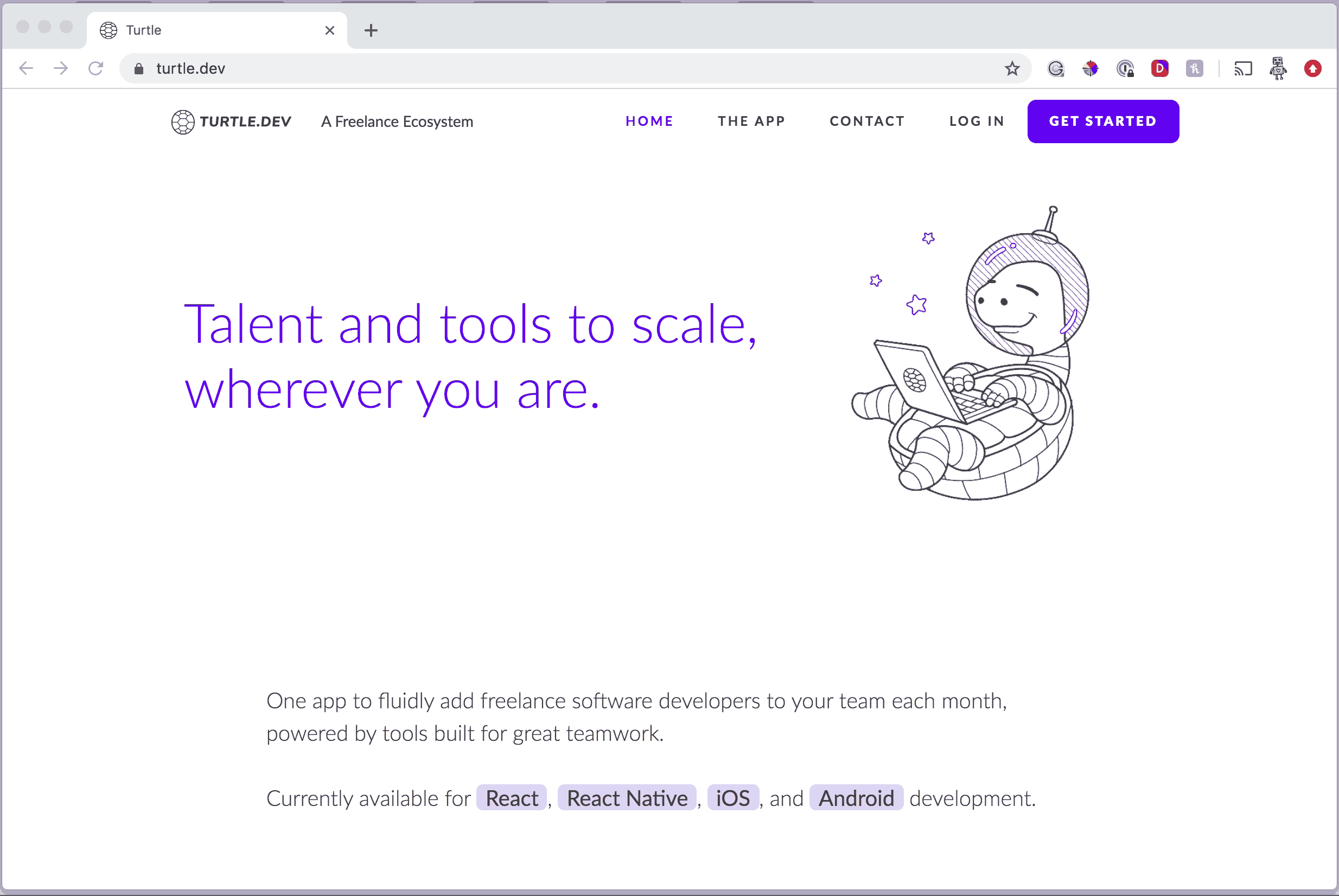Customer
From concept to customers, no coding needed: how Turtle built their marketing funnel with Webflow + Typeform
They wanted to realize their idea fast. But building a website from scratch can take forever. Find out how the Turtle team created their site without a single line of code.

How many times have your best ideas been blocked by the reality of making them happen?
Sure, you can picture your dog dating app perfectly—right down to the paw-swiping animations and satisfying ‘you’ve found a match’ woof sounds.
But you tried coding it yourself, and no. Just no. So you turned to a freelance developer website. And that didn’t go much better.
Venkat Dinavahi and Vlad Lokshin understand.
That’s why they came up with the idea for Turtle, which is one part freelance developer directory, one part project management app.
The goal? Make finding, hiring, and collaborating with freelance devs easier for small companies. And at the same time, create a space where developers can directly connect to good quality clients.
There was just one problem: since Turtle didn’t exist yet, finding and managing freelance devs to code it would be a drag.
So they turned to online tools and came up with an ambitious plan: make the website fast, without writing a single line of code. Here’s how Webflow and Typeform gave birth to Turtle.
No coding? No problem
Webflow is the way to design, build, and launch powerful websites in a visual way. Think drag-and-drop, sliders, and deep customization features—all while Webflow writes clean semantic HTML, CSS, and JavaScript. It’s like Photoshop for websites.
Here’s how it looks:
Vlad heard that coworking app Spacious, later acquired by WeWork, was built with Webflow. He was instantly intrigued.
Since Webflow has a range of advanced features to build beautiful, unique websites, Vlad took a little while to fully master the software. He didn’t want the Turtle site to look like a cookie-cutter template. He wanted a professional looking platform, complete with custom animations that would take “an insane amount of time to custom-code.”
That might seem ambitious with an online web-builder. But Vlad says that the money saved from doing it all himself—and the much shorter development cycle overall—made learning to use Webflow to its full potential “a no-brainer.”
And the results speak for themselves.
Within one month, the core website was sorted. It looked great, too. Now they just had to sign up some freelance developers—and some companies to hire them.
From Webflow to sign up flow
Vlad needed a pair of application forms, but his engineering background had taught him an important lesson: “coding a custom form from scratch is a pain in the ass.”
And just like the rest of the site, they wanted a sleek, professional experience that matched their brand. So Vlad started looking for no-code form builders, and one in particular stood out:
Once he realized that he could embed a typeform full screen and tweak the colors to match Turtle’s brand, Vlad had “an ‘a-ha!’ moment.”
He created a custom code embed on a page in Webflow, copy and pasted the embed script from Typeform—and that was it. A seamless experience, from Webflow to sign up flow.
Since launching the Webflow-built site with embedded typeforms, Turtle has signed up over 70 companies and built a network of over 900 freelancers. In the past year, they’ve more than doubled their customer base.
But the core value Vlad sees in using Webflow and Typeform isn’t in the outcome. It’s in the process.
Time > money
Vlad is a firm believer that time is more valuable than money. And by using Webflow and Typeform, Turtle has saved a lot of time.
The best part? Making changes to the site or typeforms is just as fast, as they don’t have to worry about breaking anything on the front end of the Turtle app itself.
So much for slow and steady wins the race.





